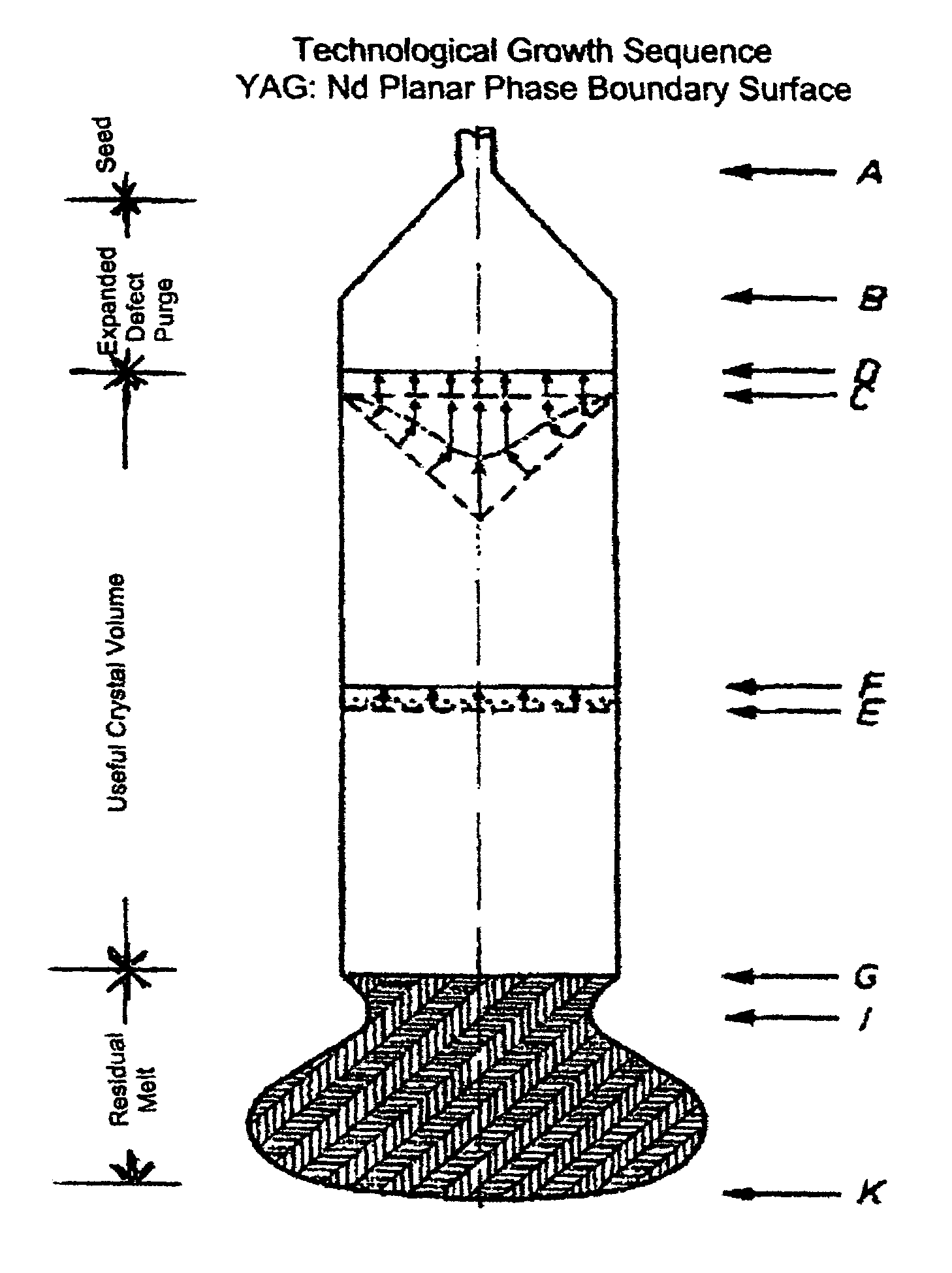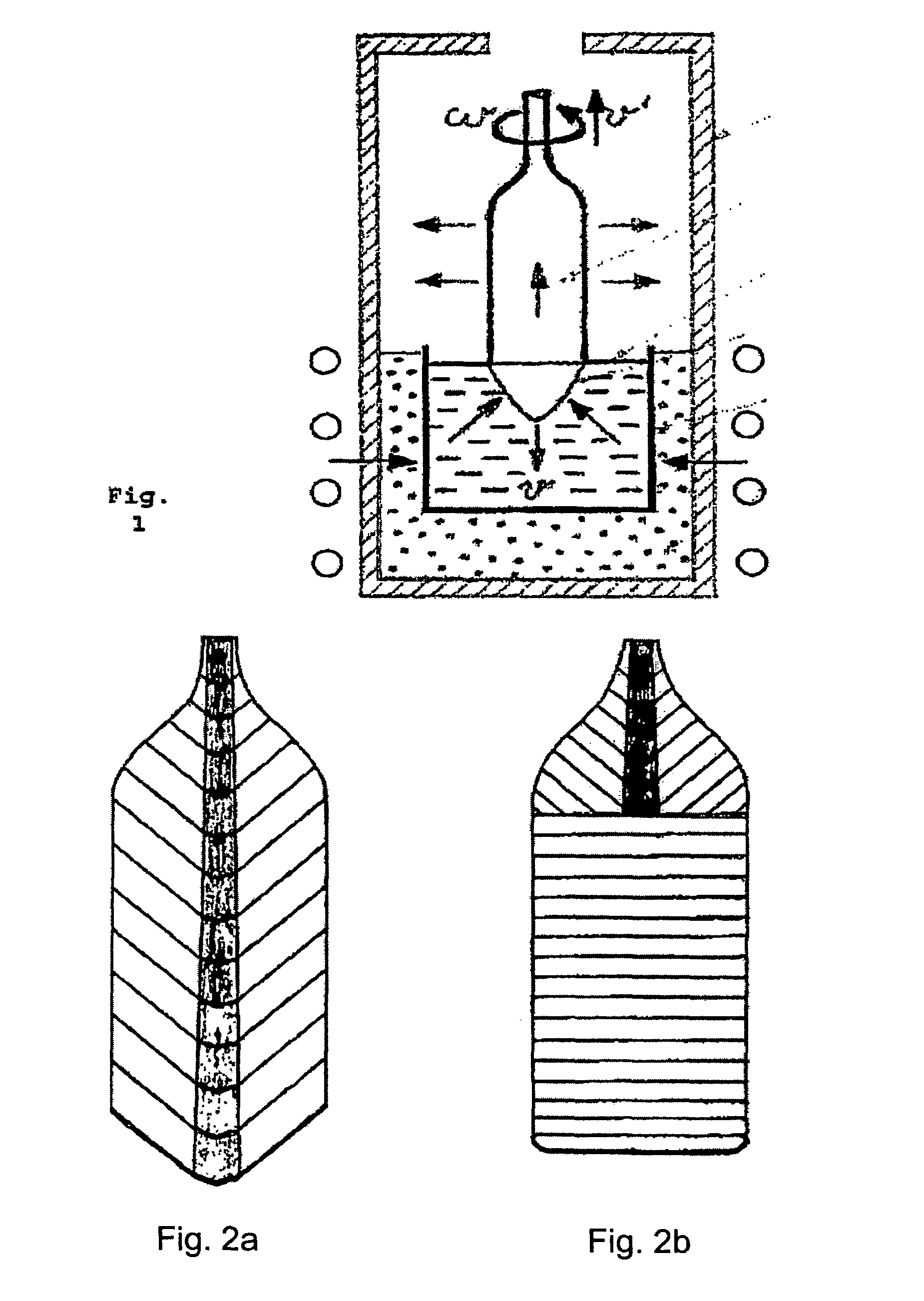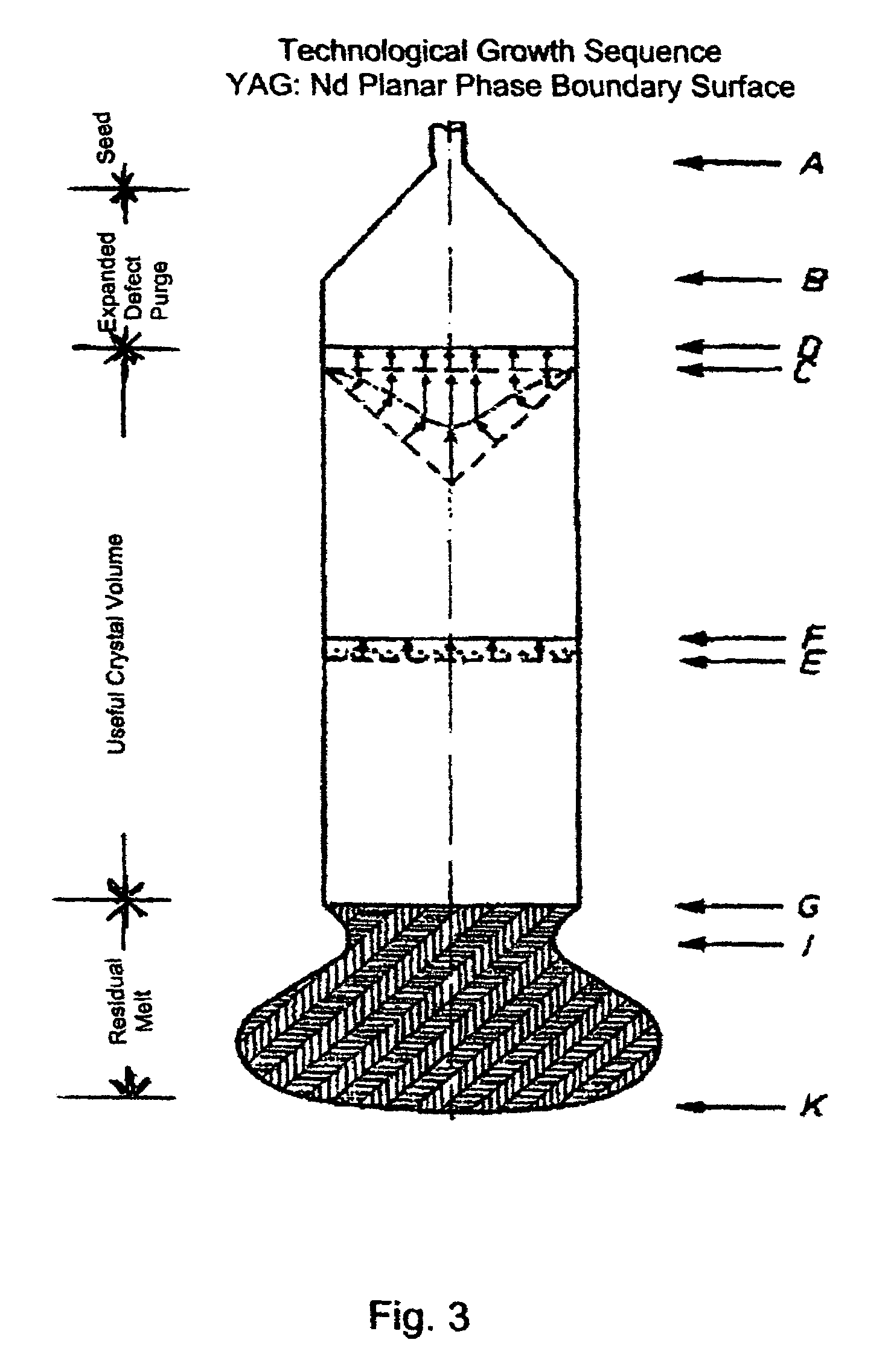Method and apparatus for making a highly uniform low-stress single crystal by drawing from a melt and uses of said crystal
a single crystal, highly uniform technology, applied in the direction of single crystal growth details, crystal growth process, under a protective fluid, etc., can solve the problems of stress birefringence, unsatisfactory optical quality, and further miniaturization of structural elements, so as to reduce heat loss, reduce stress-induced birefringence, and reduce the minimum radial and/or axial temperature gradient
- Summary
- Abstract
- Description
- Claims
- Application Information
AI Technical Summary
Benefits of technology
Problems solved by technology
Method used
Image
Examples
Embodiment Construction
[0045]In the method according to the invention a seed crystal with a small diameter, which is oriented in the desired direction, is immersed in a melt of crystal raw material, especially a highly pure material, and is slowly drawn out of the melt in a vertical direction while it is rotated and while heat is removed from the melt. During this growing process the drawing speed of the rotating crystal seed is first set so that it increases from a small diameter (FIG. 3a at A) to a large desired diameter (FIG. 3a at B). One type of drawing with an increase of diameter can start in the method according to the invention with a convex cone-shaped growth front according to the state of the art. In this first stage it is also not necessary to take care to avoid temperature fluctuations. In this stage the growing crystal can have a fishtail pattern according to the state of the art (FIG. 2b). When the crystal has reached the desired diameter (FIG. 3 at B), it is grown further to reach a desir...
PUM
| Property | Measurement | Unit |
|---|---|---|
| diameters | aaaaa | aaaaa |
| melting temperatures | aaaaa | aaaaa |
| diameters | aaaaa | aaaaa |
Abstract
Description
Claims
Application Information
 Login to View More
Login to View More - R&D
- Intellectual Property
- Life Sciences
- Materials
- Tech Scout
- Unparalleled Data Quality
- Higher Quality Content
- 60% Fewer Hallucinations
Browse by: Latest US Patents, China's latest patents, Technical Efficacy Thesaurus, Application Domain, Technology Topic, Popular Technical Reports.
© 2025 PatSnap. All rights reserved.Legal|Privacy policy|Modern Slavery Act Transparency Statement|Sitemap|About US| Contact US: help@patsnap.com



